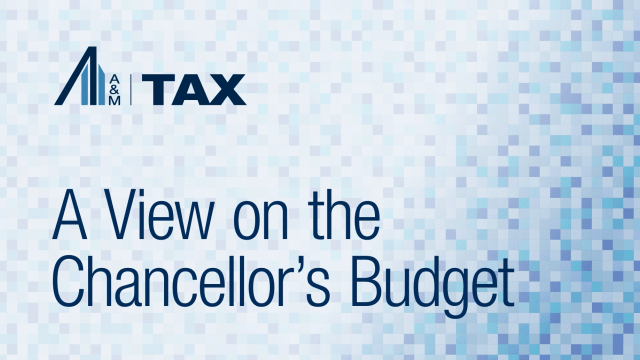Promises Made, Promises Kept? At Long Last, the IRS Is Expected to Issue Guidance on Nonqualified Deferred Compensation Plans
2015-Issue 41—Eight years ago, the IRS announced it intended to provide additional regulatory guidance on Internal Revenue Code (IRC) Section 457(f) (IRS Rev. Bull. 2007-32). Section 457(f) applies to nonqualified deferred compensation plans of state and local governments and tax-exempt entities. The promised guidance was intended to address the definition of a severance pay plan under Section 457(e)(11) and the definition of substantial risk of forfeiture under Section 457(f)(1)(B). The IRS also intended the guidance to harmonize Section 457(f) and Section 409A, which also addresses nonqualified deferred compensation plans.
Perhaps the eight-year wait is nearly over. The IRS 2015-2016 Priority Guidance Plan included regulatory projects related to both Section 457(f) and Section 409A. Recently, IRS officials informally indicated that this guidance will be issued very soon. We believe that means the formal guidance may be issued by the end of this year or early in 2016 — although the IRS is not operating under any public deadlines, so it may still take some time before the guidance is issued.
While Section 457(f) applies to nonqualified deferred compensation (NQDC) plans provided by not-for-profit and government entities, Section 409A applies more broadly to NQDC plans. Although Section 457(f) and Section 409A both apply to NQDC plans of tax-exempt employers, the two IRC sections have conflicting terms.
Under Section 457(f), amounts deferred become includable in taxable income when those amounts are no longer subject to a “substantial risk of forfeiture.” However, when a substantial risk of forfeiture is imposed after the legally binding right to compensation occurs (often referred to as a “rolling risk of forfeiture”), the risk of forfeiture may be recognized as a proper income deferral approach under Section 457(f), but not under Section 409A. This inconsistency is expected to be addressed in the upcoming guidance. Observers expect the IRS guidance to align the definition of substantial risk of forfeiture more closely to the Section 409A definition.
Section 457(f) does not apply to “bona fide” severance pay plans, which means that severance pay would be includable in taxable income when paid, and not upon vesting. Section 409A permits a separation pay exception that is more restrictive than Section 457(f). Observers expect the IRS guidance to provide a consistent definition of severance pay, likely in favor of the current Section 409A treatment.
Under previously issued proposed regulations, the IRS addressed the treatment of NQDC plans that violated Section 409A, and when amounts that were improperly deferred were to be includable in taxable income (along with the treatment of additional taxes and penalties associated with the violation). The IRS indicated that new guidance will include the finalization of these regulations under Section 409A.
The new guidance will apparently also address methods of correcting Section 409A plan documents and plan operational errors and possibly expand the types of errors that may be corrected.
Alvarez & Marsal Taxand Says:
Perhaps, after waiting for more than eight years, the advisory community will receive guidance in the form of proposed regulations under Section 457(f). These proposed regulations may also open the door to additional regulations under Section 409A. Does this mean another round of plan amendments for the many existing NQDC plans sponsored by tax-exempt organizations? The answer is “it depends.” The actual regulations will dictate the need for plan amendments. Certainly, that may be the price we have to pay for a promise that is (finally) kept.
Disclaimer
The information contained herein is of a general nature and based on authorities that are subject to change. Readers are reminded that they should not consider this publication to be a recommendation to undertake any tax position, nor consider the information contained herein to be complete. Before any item or treatment is reported or excluded from reporting on tax returns, financial statements or any other document, for any reason, readers should thoroughly evaluate their specific facts and circumstances, and obtain the advice and assistance of qualified tax advisors. The information reported in this publication may not continue to apply to a reader's situation as a result of changing laws and associated authoritative literature, and readers are reminded to consult with their tax or other professional advisors before determining if any information contained herein remains applicable to their facts and circumstances.
About Alvarez & Marsal Taxand
Alvarez & Marsal Taxand, an affiliate of Alvarez & Marsal (A&M), a leading global professional services firm, is an independent tax group made up of experienced tax professionals dedicated to providing customized tax advice to clients and investors across a broad range of industries. Its professionals extend A&M's commitment to offering clients a choice in advisors who are free from audit-based conflicts of interest, and bring an unyielding commitment to delivering responsive client service. A&M Taxand has offices in major metropolitan markets throughout the US., and serves the U.K. from its base in London.Alvarez & Marsal Taxand is a founder of Taxand, the world's largest independent tax organization, which provides high quality, integrated tax advice worldwide. Taxand professionals, including almost 400 partners and more than 2,000 advisors in nearly 50 countries, grasp both the fine points of tax and the broader strategic implications, helping you mitigate risk, manage your tax burden and drive the performance of your business.
To learn more, visit www.alvarezandmarsal.com or www.taxand.com





